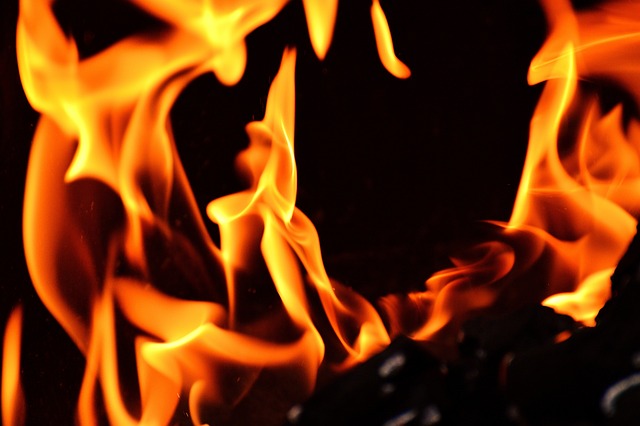Selling a fire-damaged home in California requires strict adherence to legal guidelines under the Real Estate Transparency Act, focusing on disclosure and consumer protection. Sellers must inform buyers about fire damage, provide a "Presumptive Safe Level" report, and address safety concerns within 72 hours. These regulations empower buyers with transparency, documentation, and inspections, fostering trust. Compliance ensures a smooth sale process while meeting California's post-wildfire resilience standards, enhancing structural integrity and fire safety.
California’s housing regulations are a complex web of laws designed to protect buyers and ensure safe, transparent transactions. This article explores key aspects of these regulations, with a specific focus on selling fire-damaged homes in the Golden State. From understanding legal perspectives to navigating post-disaster reconstruction, we delve into the essential steps and requirements for both sellers and buyers. By examining disclosure, transparency, and fire damage mitigation, this guide equips you with crucial insights for navigating the California housing market after a fire.
- Understanding California's Housing Regulations: A Legal Perspective
- Selling Fire-Damaged Homes: Navigating the Legal Requirements
- Disclosure and Transparency: Informing Potential Buyers in California
- Post-Disaster Reconstruction: Building Back Better Under CA Law
Understanding California's Housing Regulations: A Legal Perspective

California’s housing regulations are a complex web of laws and guidelines designed to ensure fair and safe practices in real estate transactions, including the sale of fire-damaged homes. From a legal perspective, understanding these regulations is crucial for both buyers and sellers. When selling a fire-damaged home in California, there are specific disclosure requirements that must be met. Sellers are legally obligated to inform potential buyers about any significant issues, such as structural damage or previous fires, that could impact the property’s value or safety.
These regulations aim to protect consumers from misleading information and ensure transparency throughout the selling process. In light of this, California has implemented strict guidelines for disclosing fire damage, which can vary based on the severity and age of the incident. Sellers must provide detailed reports and, in some cases, may be required to repair or mitigate certain damages before proceeding with the sale. Understanding these legal obligations is essential for anyone looking to navigate the selling of a fire-damaged property in California successfully.
Selling Fire-Damaged Homes: Navigating the Legal Requirements

In California, the sale of fire-damaged homes is subject to specific legal requirements designed to protect buyers and ensure transparency. If a property has sustained damage from a fire, potential sellers must disclose this information accurately to prospective buyers. The state’s Real Estate Transparency Act mandates that all disclosures related to structural issues, including fire damage, be made in writing and provided to the buyer at least 72 hours before the sale is finalized. Failure to comply with these disclosure rules can result in legal repercussions for the seller.
Additionally, sellers must obtain a “Presumptive Safe Level” (PSL) report from a qualified inspector after the fire. This report assesses the level of damage and recommends necessary repairs. It’s crucial that the seller address any safety concerns highlighted in the PSL before putting the property on the market. Buyers have the right to request this report, so sellers should be prepared to provide it upon reasonable notice. Adhering to these legal requirements ensures a smooth transaction and safeguards both the buyer and seller from potential disputes related to fire damage.
Disclosure and Transparency: Informing Potential Buyers in California

In California, disclosure and transparency are paramount when it comes to selling real estate, especially for properties that have experienced fire damage. The state’s regulations mandate that potential buyers be fully informed about any historical or current issues affecting a property. This includes revealing details about past fires, their extent, and the subsequent repairs undertaken. Sellers must provide comprehensive documentation detailing the fire damage, the renovation work completed, and any ongoing maintenance requirements. Such transparency empowers buyers to make well-informed decisions, ensuring they understand the scope of the property’s history and its current state.
For a selling fire damaged home in California, this means that real estate agents and sellers have a legal obligation to disclose any relevant information. Buyers are encouraged to conduct thorough inspections and seek professional assessments to gauge the property’s safety and value post-fire. These measures collectively foster trust and accountability within the real estate market, allowing buyers to navigate transactions with confidence, especially when considering the unique circumstances of purchasing a fire-damaged residence.
Post-Disaster Reconstruction: Building Back Better Under CA Law

In the wake of devastating wildfires, California has implemented robust housing regulations aimed at post-disaster reconstruction, emphasizing resilience and improved living conditions. These laws not only govern the rebuilding process but also play a pivotal role in helping homeowners navigate the sale of fire-damaged properties. Under California law, sellers must disclose any known damage caused by fires, ensuring transparency throughout the real estate transaction. This disclosure requirement is a cornerstone of the state’s commitment to building back better and safer communities.
The reconstruction process involves stringent building codes designed to enhance structural integrity and fire safety. These guidelines are particularly crucial for homeowners looking to sell fire-damaged homes. By adhering to these regulations, builders and owners can ensure that properties meet modern safety standards, making them more attractive to potential buyers. This not only facilitates the sale of fire-damaged homes but also contributes to the overall resilience and sustainability of California’s housing market.
California’s housing regulations, shaped by its unique legal perspective, ensure transparency and safety for homebuyers. From understanding fire damage disclosures to navigating post-disaster reconstruction, these guidelines facilitate responsible selling and buying practices. For those looking to sell fire-damaged homes in California, adhering to these regulations is not just a legal necessity but also a step towards fostering a robust and resilient real estate market.






